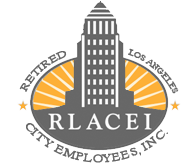
LACERS BOARD UPDATE
By Michael R. Wilkinson, LACERS Commissioner
Email: MikeWilkinson4LACERS@gmail.com
When I sit down to write this column every month, I do what I can to keep from “getting deep in the weeds,” becoming too preoccupied with details or complexities of how our pension plan is run. However, every now and then I see a reason to break one of my rules. Like today, when I want to cover how we evaluate performance in one of our most profitable asset classes, private equity.
Private equity covers a wide range of investments that have the potential for very high returns. However, unlike publicly traded securities, there is no daily pricing of private equity investments that can be used as a good yardstick (benchmark) for investment performance comparisons.
Why is this so? First, let’s look at what we are doing and why. The LACERS Board and investment staff want a good yardstick to measure performance. For instance, if the asset class is big U.S. companies, then we use the Standard and Poors S&P 500 index as that asset class benchmark. Stocks of the largest 500 publicly traded U.S. companies are in that index, and their prices are readily available. This is a straightforward approach used to compare and evaluate the investment performance of LACERS’ investment managers that use strategies and skill to actively buy and sell some of those same stocks, with the goal of outperforming that S&P 500 index benchmark after fees.
There is nothing directly comparable for private equity, so we have been using a custom benchmark – the Russell 3000 index plus an additional three percent. The Russell 3000 index is comprised of the largest 3,000 U.S. stocks. We added three percent as an additional investment performance hurdle as a “liquidity premium,” to compensate for private equity investments being locked up for years. In other words, we expect private equity’s investment performance to outperform the Russell 3000 index by three percent.
Since the timing of valuations between securities in public equity markets and the more difficult-to-price private equity holdings are often out of sync, the result can sometimes be very misleading.
A good example is LACERS’ recent private equity one-year return for the period ending Sept. 30, 2021 of 56.79 percent. This exceeded our benchmark by 21.05 percent. While we are pleased by this result, we understand that part of the magnitude of the outperformance was driven by the timing of the valuations.
The opposite market climate can also give inaccurate readings. There have been and will continue to be occasions in which private equity investments lagged valuations or are equal to or underperforming those in public markets. In those situations, the Russell 3000 plus three percent sets a very high bar that makes nearly all private equity investments look less attractive.
Another limitation of using the Russell 3000 index plus three percent as LACERS’ private equity benchmark is that this index is made up solely of publicly traded U.S. companies. However, approximately 23 percent of LACERS’ private equity portfolio is invested in non-U.S. companies.
The LACERS Board approved a joint recommendation from our general investment consultant, NEPC, and our private equity consultant, Aksia ToreyCove Partners, to begin using the Cambridge Global Private Equity and Venture Capital Index as a private equity benchmark. It is a better representation of LACERS’ private equity portfolio and provides a robust, meaningful universe for peer group comparisons.












